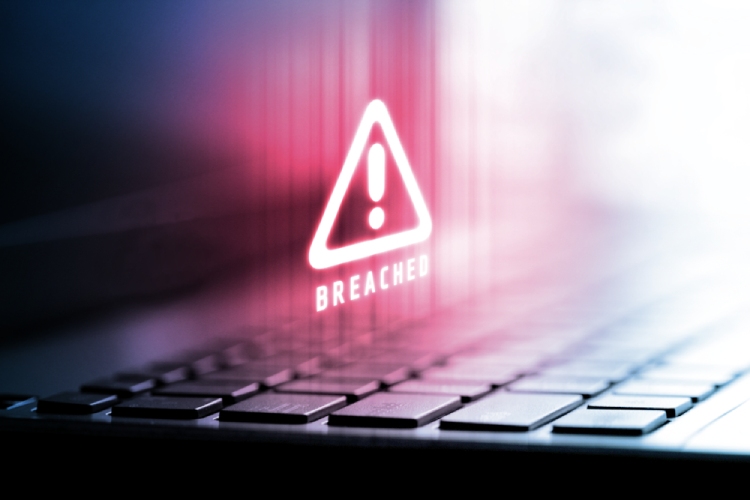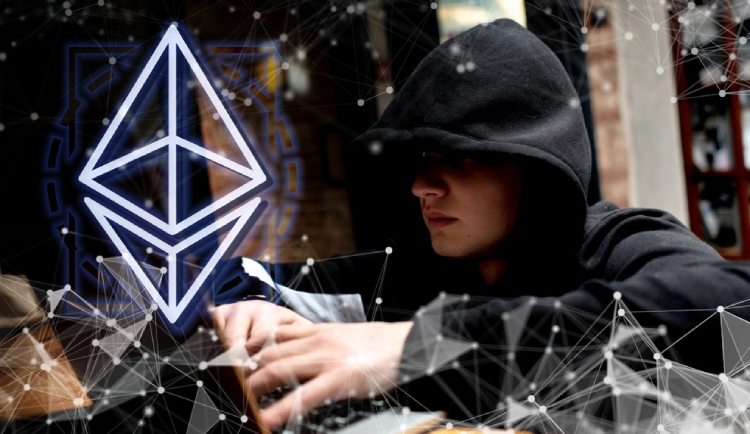The Internet is becoming “the wild West” every year and continues to commercialize. It contributes to the fact that the motives of hackers, or so-called “black hats,” become increasingly greedy, so enterprises must prepare for possible attacks timely.
The growth and development of the software security industry will continue to shape the trajectory of our future. Digital systems play a crucial role today in banking, voting systems, medicine, cars, aircraft, trains, implanted medical devices, and so on. And each of these digital systems is potentially vulnerable.
So what’s cybersecurity? Cybersecurity is a set of methods, technologies, and processes designed to protect the integrity of networks, programs, and data from digital attacks. The purpose of cyberattacks is to obtain unauthorized access to confidential information by copying, modifying, or destroying it. It can also serve for money extortion or disrupting business processes in the companies.
But don’t get trapped thinking cybersecurity is a solution or technology and nothing more. Yes, it includes tools and techniques that are used in everyday struggles to ensure compliance and integrity of information; but that’s not all. Cybersecurity is a business process.
The attackers often search for data, whether personal data or internal (confidential) company data, to be used in blackmail schemes. Besides, users’ data are collected by almost all enterprises or organizations on the Internet. It suggests a growing trend of security breaches, and hackers are finding increasingly sophisticated methods to access the domains of online companies.
As the world changes rapidly in line with digital transformation, part of that change must be the adoption of robust cybersecurity. Whatever your business or whatever your role in someone else’s company is, it ‘s essential to understand what cybersecurity is and what is necessary to guarantee it.
Why is it Important to Learn About Cybersecurity

It is essential to understand that this concept is not a specific case of protection against attacks. Cybersecurity is the embodiment of all security measures for networks, applications, and devices. This solution is aimed at protecting sensitive data, safeguarding its integrity, and preserving the correct operation of any business.
The number of technical devices (computers, smartphones, tablets, and others) is increasing rapidly, so it is imperative and vital to ensure effective information technology protection measures. However, the main problem is that time is coming. Technology, character, and principles of cyber-attacks are changing and improving.
In this regard, the traditional approach, which focuses on protecting the most important resources from already known threats while missing less important components – is not effective and carries great security risks, in general. Accordingly, simply writing a technical document on risks for a specific information system is not effective. So to control and increase the level of security, it is necessary to monitor, analyze, and update the cybersecurity system continually.
The Biggest Cybersecurity Threats in 2020

Over the past few years, there has been a sharp increase in the number of hacker attacks, data theft, and malware on the Internet, and they are reported not only by antivirus companies. Recently, we have seen many airlines report data theft; organizations such as FIFA, the NHS have been hit by malware. And even the 2016 U.S. election was reportedly compromised – though in this case, it is likely a bluff.
In the modern world, each organization, whether it be government structures, financial, commercial, medical, and others, collects, processes, and stores vast amounts of personal data of users, customers, employees. All this information is confidential, and its leakage, loss, or theft can have negative consequences, both for the person, in general, and for the organization.
Among other things, organizations providing infrastructure to cities, countries, and societies, as such, may be under cyber attack. These include electricity, water, heat, transport structures, etc. To some extent, each system interacts with the computer, and the security of these and other organizations is essential for the functioning and life of society.
Security threats are generated faster than we can imagine. Nevertheless, there are several well-known threats worth remembering and applying appropriate protection measures to prevent them.
Social media hacking
Avoiding authorization on social networks is most often a consequence of mailbox hacking. Besides, users make many mistakes, resulting in deplorable consequences. Personal photos, unwanted messages, and sensitive data fall into the hands of intruders.
It is necessary to know that at the moment, it is much easier to break into the social media account than to bypass the protection of sufficiently protected email services. Therefore, a set of measures is necessary. The best protection is prevention and vigilance.
So, what can you do to protect yourself?
- Include two-factor authentication. Two-factor authentication requires not only a password but also an additional unique code. You can get it by SMS by voice call or in a particular application.
- Install an antivirus not only on the computer but also on the smartphone. Many antiviruses block not only malicious software but also suspicious URLs.
- Do not follow the links and attachments from the emails.
- Use difficult passwords. Come up with a unique password for each service and change them regularly.
Cryptojacking

The emergence of digital forms of currencies based on cryptography caused the interest in the way they are obtained – mining. Bitcoin mining requires serious computing power that allows the miner to hash data quickly, solving more tasks, and making more money.
Cryptojacking is a new method of mining that illegally uses the computers of ordinary users to obtain fast, non-traceable profits. Code on infected devices works secretly and can operate unnoticed for a long time. The hidden nature of cryptojacking is very attractive to cybercriminals because of the possibility of obtaining more money for less risk – the risk of being caught and identified.
You can see the signs of malicious cryptojacking infection, which symptoms are:
- High CPU use
- Sluggish or unusually slow response time
- Device overheating
You can avoid cryptojacking in the browser using specific plugins. For instance, MineBlock is a free extension for the browser that prevents all intruders from mining. The application has powerful potential, can detect and block malicious cryptojacking scripts before they are loaded into the browser. Even when cryptominers attempt to change their name and address randomly, the MineBlock algorithm can detect mining patterns in Javascript code and destroy them instantly.
Ransomware attacks
Ransomware is a type of malware that interferes with the correct functioning of the computer and requires money to return access to information. The extortion virus is perhaps one of the easiest-to-write types of malware. It is why ransomware is widespread. Although there are better-written malware codes, some of them even have technical support.
Ransomware is not always directed at a private computer. The purpose of the attacker is to extort money from the victim, so it makes sense for him to attack small and medium-sized companies. Thus, in 2016 42% of such companies were attacked by ransomware, of which 32% paid the ransom, and 20% never got access to their computers.
Ransomware is a severe security problem. In addition to taking PCs out of service, they “steal” the user. Simplicity in writing generates a huge number of different types of ransomware – even a novice in writing virus codes can create such extortion. Also, a wide range of ransomware is publicly available on the Internet, which allows anyone to download it, modify it, and infect other users.
To prevent possible ransomware attacks, you have to be very attentive. Do not download files and apps from suspicious sources. Also, you must update your Windows operating system to eliminate vulnerabilities and use security software. Besides, according to Microsoft, Windows 10 Creators Update contains additional protection against ransomware viruses.

Unpatched Vulnerabilities/Poor Updating
A patch is a piece of information, a piece of code, or a software module that changes the source code of a game or program. Patches affect individual elements of the software or and completely redesign its structure. But in the case of programs, patches not only solve problems but also make software better. Windows developers are steadily creating new patches to correct some security failures or holes.
In case your system is not updated, it becomes more vulnerable to cyber-attacks. The poor updating causes problems with security and makes data leaks possible. It doesn’t matter what kind of programs you want to patch for; it’s always done the same way. First, make sure you have the latest software update. You can find it only on the official website. To do this, download the product manufacturer’s web page and check the Updates or Download section for the latest versions. These measures will help you to stay secure.
Distributed denial of service (DDoS) Attacks
A DDOS attack is an attack on a site whose primary purpose is to disable it by submitting a large number of false requests. As a result of this attack, servers are forced to handle excessive amounts of false requests, and the site becomes inaccessible to the user. Commercial and information sites are popular victims of such attacks. Hackers may use this type of extortion attack, demanding money to stop their actions or waging an information war.
Usually, the attack is organized using Trojan programs. Previously, Trojans infect under-protected computers of ordinary users and may not show themselves at all on the infected computer for quite a long time, waiting for a command. A computer may be subjected to this attack when the user visits various infected sites, receives mail, or installs unlicensed software.
It is difficult to combat this type of attack because requests come from different sides. In general, protection includes activities such as filtering and blackholing, removing server vulnerabilities, building resources, dispersing (building distributed and duplicated systems that will continue to serve users), evading (removing the immediate target of an attack from other related resources, masking an IP address).
Conclusion
Security on the Internet depends primarily on the user himself. And not even on their technical skills, but on their responsibility and understanding of what they possess, and what they will face in case of data loss. Antivirus is the right solution, the operating system and firewall also matter, but all this will work only in a complex with personal digital hygiene.
Sometimes it happens that the system has everything necessary to ensure security, but the “key lies under the mat” – the long and complex password is recorded on a paper not to forget. The slightest mistake of the user – and the whole system will be hacked. Consequently, everyone has not only to install additional software for protection but stick to the simplest rules of digital hygiene, which can save your life one day.





